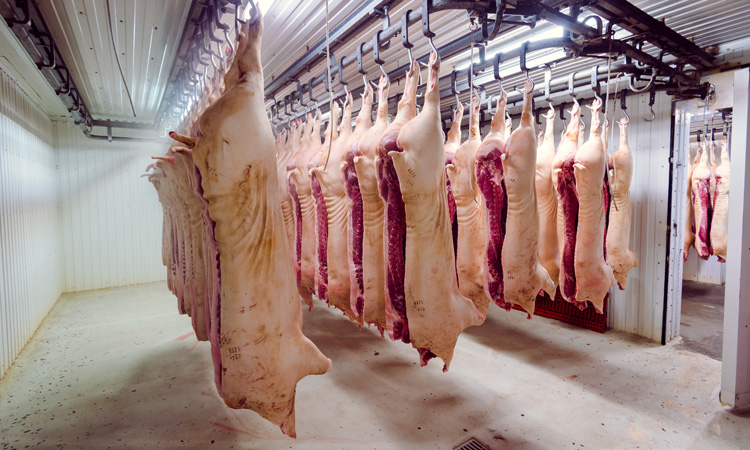Data suggests USDA’s swine inspection rules pose threat to public health
- Like
- Digg
- Del
- Tumblr
- VKontakte
- Buffer
- Love This
- Odnoklassniki
- Meneame
- Blogger
- Amazon
- Yahoo Mail
- Gmail
- AOL
- Newsvine
- HackerNews
- Evernote
- MySpace
- Mail.ru
- Viadeo
- Line
- Comments
- Yummly
- SMS
- Viber
- Telegram
- Subscribe
- Skype
- Facebook Messenger
- Kakao
- LiveJournal
- Yammer
- Edgar
- Fintel
- Mix
- Instapaper
- Copy Link
Posted: 7 April 2020 | Sam Mehmet (New Food) | No comments yet
Food & Water Watch and the Center for Food Safety have suggested that analysis of newly released data reveals the New Swine Inspection System eliminates critical animal and carcass inspection, which could potentially lead to disease outbreaks.


New data shows that the US Department of Agriculture’s (USDA) new rules for swine slaughter plants – the New Swine Inspection System (NSIS) – reduce federal government inspection of animals and carcasses showing signs of diseases, according to Food & Water Watch and the Center for Food Safety. The organisations have also suggested that inspections for other food safety or public health related conditions, including those showing signs of diseases that can move from animals to people, such as coronaviruses, have also been reduced.
The USDA rules, finalised in October 2019, are now being implemented in slaughter plants around the US. USDA has so far reportedly rejected requests to stop plant transitions to the new system in light of the COVID-19 pandemic, according to the statement from the organisations.
Food & Water Watch’s analysis of data, obtained as a result of a federal Freedom of Information Act (FOIA) lawsuit, reportedly shows that USDA veterinarians were able to evaluate 3.5 times fewer potentially diseased animals and carcasses in plants that piloted USDA’s NSIS rules, compared to plants that were operating under normal inspection, during the select years in the plants for which data was available.
The newly released data is said to “contradict” USDA assurances that long-standing inspection requirements would be unaffected by the new NSIS rules, which allow slaughter plant workers to first determine which animals are fit for slaughter, which carcasses are fit for commerce, and to set their own line speeds.
The Federal Meat Inspection Act, first passed in 1906, mandates that government inspectors evaluate each animal arriving at a slaughter plant and every carcass after the animal is slaughtered. If not immediately condemned, federal inspectors tag those showing signs of disease and other abnormal conditions for further evaluation by a government veterinarian before they can proceed.
Food & Water Watch’s data and analysis has suggested that the NSIS system dramatically limits the numbers of swine that can be inspected by trained federal veterinarians, and instead leaves this evaluation in the hands of untrained or under-trained slaughter-plant employees.
“Self-regulation when it comes to animal movement, slaughter, and meat inspection is bad news. This data shows just how bad it really is. While people across the country are fighting against a dangerous pandemic believed to have come first from animals, USDA is eliminating necessary safeguards against the spread of infectious diseases from swine,” said Zach Corrigan, Senior Staff Attorney at Food & Water Watch.
“If this moment teaches us anything, it is that deregulating public health standards can have disastrous consequences. The reason we have federal regulation of meat is because the industry failed to protect public health a century ago,” said Ryan Talbott, Staff Attorney at Center for Food Safety. “USDA’s decision to walk away from its obligation to protect the public is shameful and will almost certainly result in more people getting sick and dying.”
“FSIS’ implementation of the modernised swine slaughter is based on 20 years’ worth of science, data, and experience with this inspection model. To use the COVID-19 pandemic to spread fear among the American public is reckless and desperate. It is not surprising that their conclusions and predictions are absurd. This is a new low even for Food & Water Watch,” a USDA FSIS spokesperson said.
Related topics
Food Safety, Health & Nutrition, Outbreaks & product recalls, Research & development
Related organisations
Center for Food Safety (CFS), Food & Water Watch, US Department of Agriculture (USDA)







